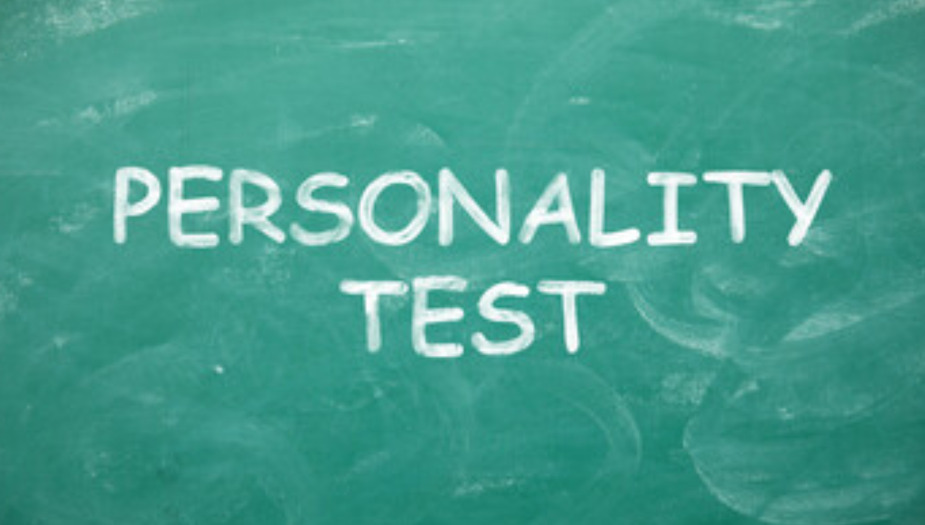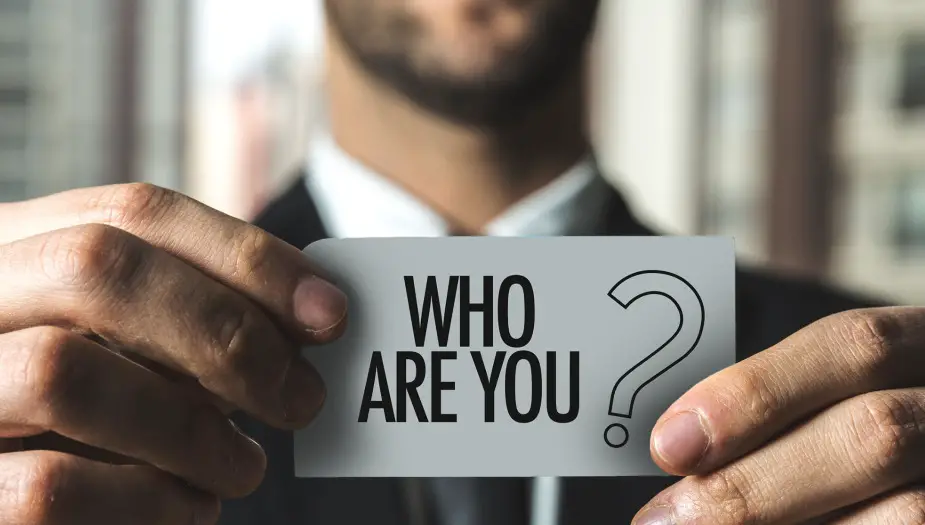Color me intrigued! We all know personality tests range from eerily accurate to just plain…eh. But where do color personality tests land on this spectrum?

Welcome, color enthusiasts, to our journey through the chromatic realm of self-awareness. By the end, you’ll know: what is the most accurate color personality test? So, grab your palette, and let’s find the true shade of your soul.
The Spectrum of Self:
Ah, the myriad ways we’ve tried to unravel the enigma of our personalities. From ancient philosophers to modern-day social media trends, humans have been on a relentless quest to understand what makes us, well, us.
- A brief history of personality tests (from Freud to Facebook quizzes):
- The Birth of Personality Tests: In the late 19th century, good old Sigmund Freud was laying the groundwork for what would become the foundation of psychoanalytic theory. The concept? Our behaviors stem from our unconscious mind. Groundbreaking? Absolutely. The start of countless quizzes about which sandwich you are? Possibly.
- Mid-century Musings: Fast forward a few decades, and personality tests started gaining traction in both clinical settings and the workplace. The famous Myers-Briggs Type Indicator made its debut, forever letting people debate whether they’re INFP, ESTJ, or one of the other 14 types.
- Modern Times: Enter the digital age. We swapped paper-and-pencil assessments for quick online quizzes that claim to decipher our personality based on our favorite pizza topping. A bit superficial? Maybe. Fun at 3 am? Definitely.
- Why color? The psychological links between hues and moods:
- Color and Emotion: Ever noticed feeling calm in a blue room or energized by a red outfit? That’s not by accident. Colors can evoke strong emotional reactions. Think about the last sunset that left you in awe or the green of a forest that made you feel tranquil.
- Cultural Context: While there are some universal feelings towards certain colors, a lot depends on cultural context. For instance, white might be a symbol of purity in some cultures and one of mourning in others.
- Daily Doses: Color impacts our daily decisions more than we realize. From the clothes we wear to the cars we drive and the brands we trust. Ever wondered why most fast-food logos are red and yellow? Hint: It’s not just because they look pretty.
Brushing Up on the Basics:
Sometimes, it’s essential to get back to the basics. Especially when those basics involve deciphering why a specific shade of lavender represents your inner introvert.
- What are color personality tests anyway?:
- The Basics: At their core, color personality tests aim to deduce specific aspects of your personality based on your color preferences. Love blue? You might be a calm, deep thinker. Always reaching for red? Hello, fiery go-getter!
- Deep Dive: It’s not just about picking a favorite color. Many tests assess your feelings on a range of shades and tones. It’s a spectrum, just like us!
- Popular tests you’ve probably taken during a coffee break:
- Buzzworthy Quizzes: We’ve all been there. One minute you’re sipping on your latte, the next, you’re finding out what shade of blue best represents your aura. Whether it’s BuzzFeed or another site, these quick tests are a modern-day rite of passage.
- The Color Wheel of Fortune: Some quizzes promise insights into love, career, and more based on your color preferences. Ambitious? Sure. Accurate? Let’s dive deeper.
Behind the Palette: The Science Part

Ever wondered if there’s some lab-coated scientist somewhere studying the connection between color and our brains? Spoiler: There is.
- Decoding the rainbow: neuroscience and color perception:
- Brainy Bits: Our brain interprets colors via the eye’s retina. Different wavelengths correspond to various colors, and our grey matter (ironically, not grey at all!) translates this into what we see and feel.
- Emotion Commotion: Certain colors trigger specific parts of our brain. For instance, red often stimulates the amygdala (hello, fight or flight!), while blue can be calming.
- Chromotherapy: Healing or hogwash?
- Ancient Practices: Believe it or not, the ancient Egyptians and Greeks practiced Chromotherapy, using colors to heal ailments.
- Modern Takes: Today, some swear by color therapy for mood improvements, while skeptics raise eyebrows. Whether it’s a placebo or potent, it’s hard to deny the mood-altering power of a sunny yellow or serene green.
The Spectrum of Self:
Ah, the myriad ways we’ve tried to unravel the enigma of our personalities. From ancient philosophers to modern-day social media trends, humans have been on a relentless quest to understand what makes us, well, us.
- A brief history of personality tests (from Freud to Facebook quizzes):
- The Birth of Personality Tests: In the late 19th century, good old Sigmund Freud was laying the groundwork for what would become the foundation of psychoanalytic theory. The concept? Our behaviors stem from our unconscious mind. Groundbreaking? Absolutely. The start of countless quizzes about which sandwich you are? Possibly.
- Mid-century Musings: Fast forward a few decades, and personality tests started gaining traction in both clinical settings and the workplace. The famous Myers-Briggs Type Indicator made its debut, forever letting people debate whether they’re INFP, ESTJ, or one of the other 14 types.
- Modern Times: Enter the digital age. We swapped paper-and-pencil assessments for quick online quizzes that claim to decipher our personality based on our favorite pizza topping. A bit superficial? Maybe. Fun at 3 am? Definitely.
- Why color? The psychological links between hues and moods:
- Color and Emotion: Ever noticed feeling calm in a blue room or energized by a red outfit? That’s not by accident. Colors can evoke strong emotional reactions. Think about the last sunset that left you in awe or the green of a forest that made you feel tranquil.
- Cultural Context: While there are some universal feelings towards certain colors, a lot depends on cultural context. For instance, white might be a symbol of purity in some cultures and one of mourning in others.
- Daily Doses: Color impacts our daily decisions more than we realize. From the clothes we wear to the cars we drive and the brands we trust. Ever wondered why most fast-food logos are red and yellow? Hint: It’s not just because they look pretty.
Brushing Up on the Basics:
Sometimes, it’s essential to get back to the basics. Especially when those basics involve deciphering why a specific shade of lavender represents your inner introvert.
- What are color personality tests anyway?:
- The Basics: At their core, color personality tests aim to deduce specific aspects of your personality based on your color preferences. Love blue? You might be a calm, deep thinker. Always reaching for red? Hello, fiery go-getter!
- Deep Dive: It’s not just about picking a favorite color. Many tests assess your feelings on a range of shades and tones. It’s a spectrum, just like us!
- Popular tests you’ve probably taken during a coffee break:
- Buzzworthy Quizzes: We’ve all been there. One minute you’re sipping on your latte, the next, you’re finding out what shade of blue best represents your aura. Whether it’s BuzzFeed or another site, these quick tests are a modern-day rite of passage.
- The Color Wheel of Fortune: Some quizzes promise insights into love, career, and more based on your color preferences. Ambitious? Sure. Accurate? Let’s dive deeper.
Behind the Palette: The Science Part
Ever wondered if there’s some lab-coated scientist somewhere studying the connection between color and our brains? Spoiler: There is.
- Decoding the rainbow: neuroscience and color perception:
- Brainy Bits: Our brain interprets colors via the eye’s retina. Different wavelengths correspond to various colors, and our grey matter (ironically, not grey at all!) translates this into what we see and feel.
- Emotion Commotion: Certain colors trigger specific parts of our brain. For instance, red often stimulates the amygdala (hello, fight or flight!), while blue can be calming.
- Chromotherapy: Healing or hogwash?
- Ancient Practices: Believe it or not, the ancient Egyptians and Greeks practiced Chromotherapy, using colors to heal ailments.
- Modern Takes: Today, some swear by color therapy for mood improvements, while skeptics raise eyebrows. Whether it’s a placebo or potent, it’s hard to deny the mood-altering power of a sunny yellow or serene green.
Primary Picks and Secondary Suspects:
Let’s face it; not all tests are created equal. And when it comes to the color spectrum, some shine brighter than others. So, which ones are truly Picasso-worthy and which are, well, more like preschool doodles?
- True Colors: Not just a song!
- The Background: Based on the Myers-Briggs concept, the True Colors test identifies four personality colors: Blue (compassionate), Green (innovative), Gold (organized), and Orange (spontaneous). Your dominant color reveals the most about you.
- Why It’s Popular: It’s quick, fun, and eerily accurate for many. Plus, who wouldn’t want to say, “I’m a radiant shade of gold”?
- The Lüscher Color Test: More than meets the eye.
- Origins: Created by Dr. Max Lüscher in the 1940s, this test delves deep. It isn’t about your favorite color but about your subconscious preferences.
- The Process: You’re given eight colors and asked to choose them based on preference. Your choices could reveal stress, optimism, and other personality nuances.
- The Dewey Color System: Reading between the lines.
- The Basics: Believe it or not, this test has nothing to do with books. It claims to be the world’s most accurate career testing instrument based on color choices.
- How It Works: By choosing and rejecting colors in a series of tasks, you’ll uncover professional avenues suited to your unique disposition.
So, Which Test Tops the Charts?
The golden question: which of these vivid ventures into our psyche is the most reliable? Let’s unmask the chromatic champion.
- Comparing accuracy and validity: who wins the color crown?
- Clinical Backing: The Lüscher Color Test, due to its age and numerous studies, has had both its heyday and its critics. It’s lauded for its deep dive into the subconscious but is not without its skeptics.
- Pop Culture Popularity: True Colors and online quizzes may not have as many clinical studies backing them, but their widespread use and accessibility make them popular contenders.
- Factors that affect test results: from lighting to last night’s dream about unicorns.
- Environmental Effects: Believe it or not, the lighting in your room, the mood you’re in, or even the argument you had earlier can influence your color choices.
- Consistency is Key: If you take the same test on multiple occasions and get different results each time, it might be less reliable.
Beyond the Test: Living in Technicolor
Once you’ve dissected your psyche’s shades, how do you use that palette in your daily life?
- Interpreting your results without a PhD.
- Consult Experts: While you shouldn’t need a degree, it’s always a good idea to read expert interpretations rather than guessing what “fiery red with a hint of burnt sienna” means.
- Balance is Vital: Remember, just as a rainbow isn’t made of one color, you’re not defined by one aspect of a test. Embrace all your hues.
- Applying color insights to daily life: Fashion, interiors, and why you shouldn’t paint your bedroom neon green.
- Wardrobe Wisdom: If your color profile says you’re a calm and serene blue, maybe that’s why you’re drawn to those navy sweaters.
- Home Sweet Hue: Paint colors, decorations, even the color of your dishes can reflect and affect your mood.
A World Awash in Color
Who knew a dive into color could paint such a vivid picture of our personalities? Remember, whether you resonate with oceanic blue or passionate red, our personalities, much like a masterpiece, are layered, complex, and uniquely beautiful. So, here’s to not just finding your color but living it vibrantly. Cheers to a life lived in full color! 🌈🎨
